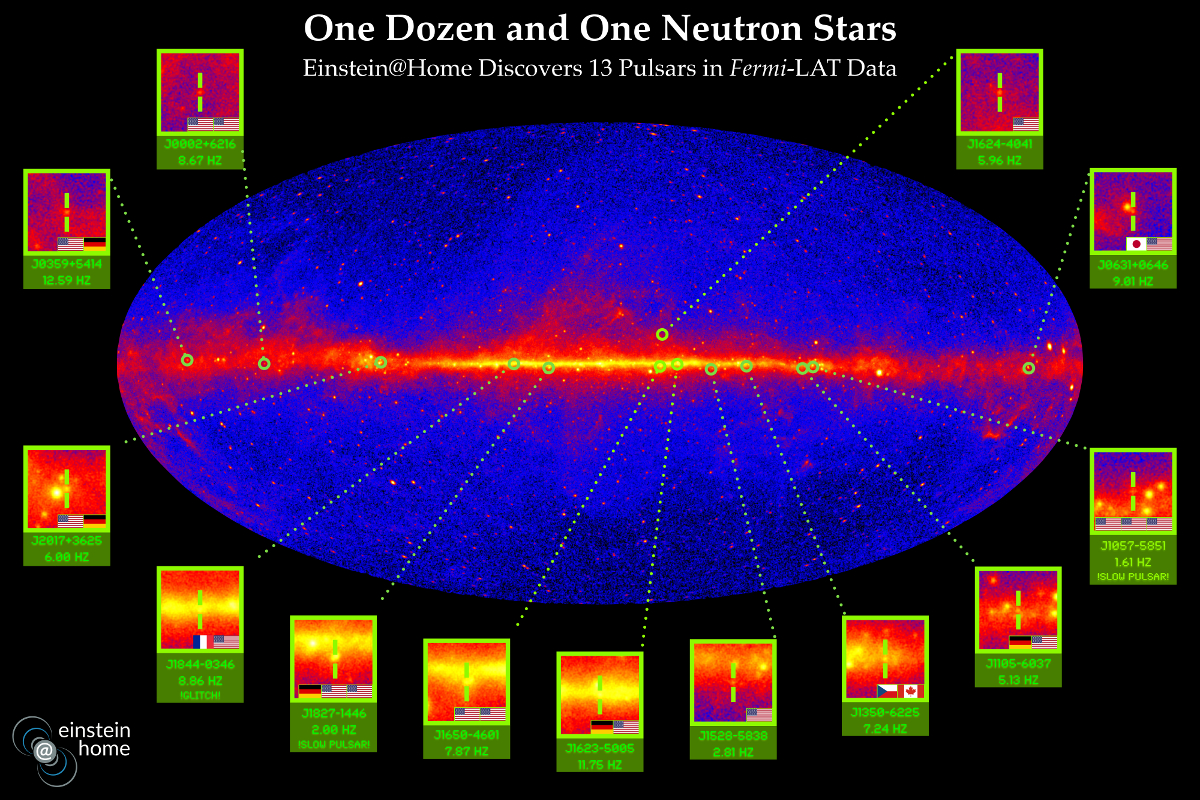
 Credit: Knispel/Clark/Max Planck Institute for Gravitational Physics/NASA/DOE/Fermi LAT Collaboration
Credit: Knispel/Clark/Max Planck Institute for Gravitational Physics/NASA/DOE/Fermi LAT Collaboration
Finding Pulsars at Home
The Fermi Gamma-ray Space Telescope map of the entire sky is actually a treasure map of black holes, neutron stars, and other mysterious objects, waiting for some clever treasure hunter to reveal them. Decoding this map is a daunting task, though, requiring enormous computing resources to extract and analyze each photon obtained by Fermi since its launch in 2008. But there are enormous potential computing resources available, in the combined computing power of all the desktop, laptop, and even cell phone computers distributed throughout the world, waiting to be harnessed for the purpose of science. The Einstein@Home project is designed to use this distributed computing power, searching public science data for signals of gravitational radiation and relativistic objects. More than 440,000 volunteers participate in the Einstein@Home project, combining their otherwise unused computer cycles into the equivalent of one of the fastest supercomputers available. The image above shows the Gamma-ray sky map from Fermi, and the insets show 13 new Gamma-ray pulsars, identified by the Einstein@Home project. These pulsars are young, spinning neutron stars. As they rotate, they periodically bring Gamma-ray hot spots into view, generating periodic flashes of Gamma-rays. A large team of people contributed to this discovery. But there are still lots of other sources detected by Fermi that have yet to be identified. Join the hunt!
Published: May 1, 2017
<
HEA Dictionary ● Archive
● Search HEAPOW
● Other Languages
● HEAPOW on Facebook
● Download all Images
● Education ● HEAD
>

Each week the HEASARC
brings you new, exciting and beautiful images from X-ray and Gamma ray
astronomy. Check back each week and be sure to check out the HEAPOW archive!
Page Author: Dr. Michael F. Corcoran
Last modified Monday, 26-Feb-2024 17:23:21 EST


